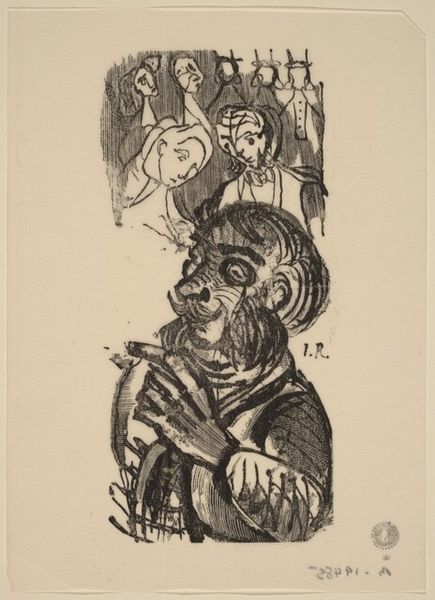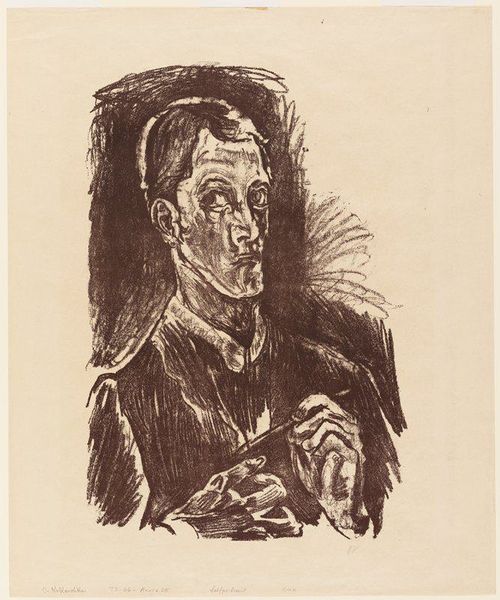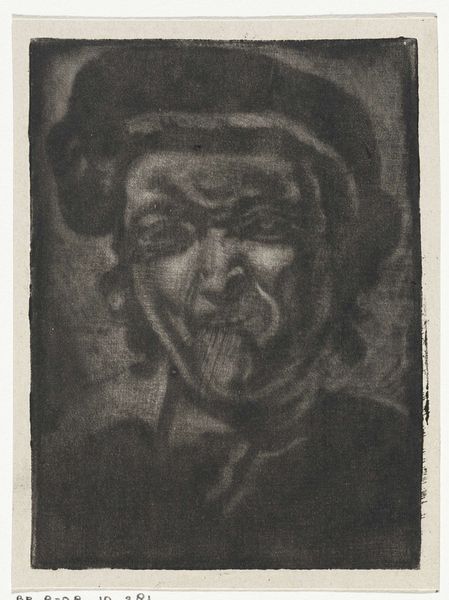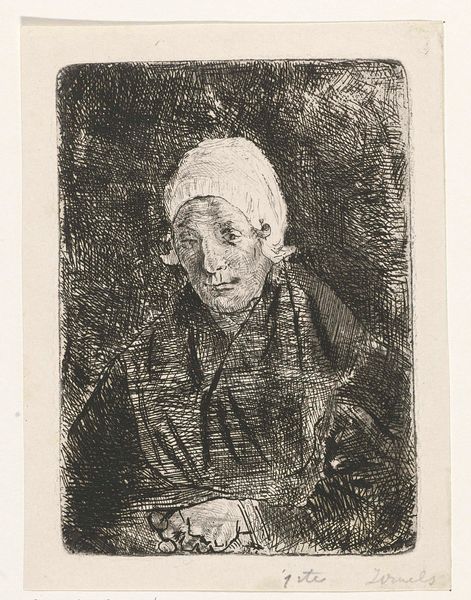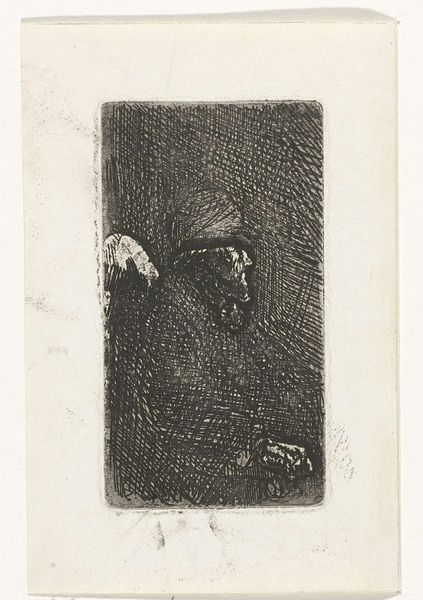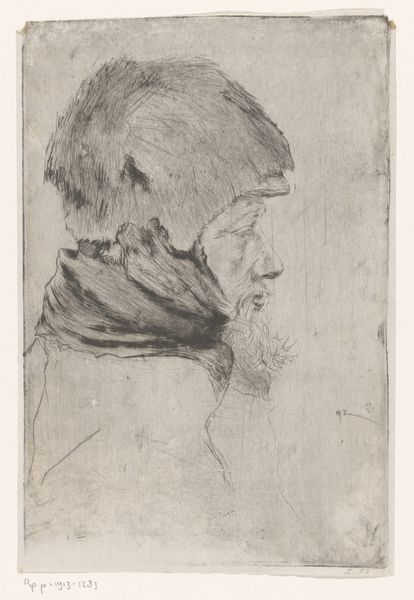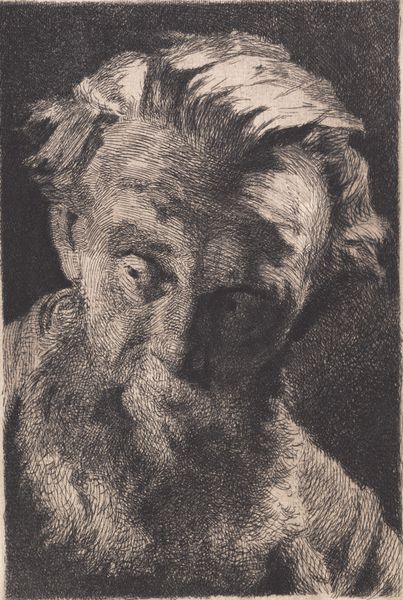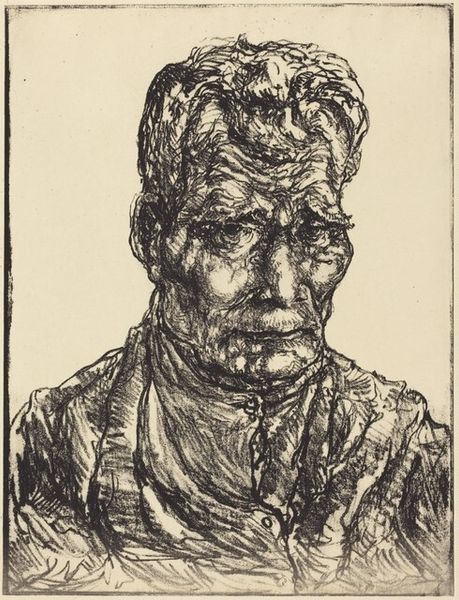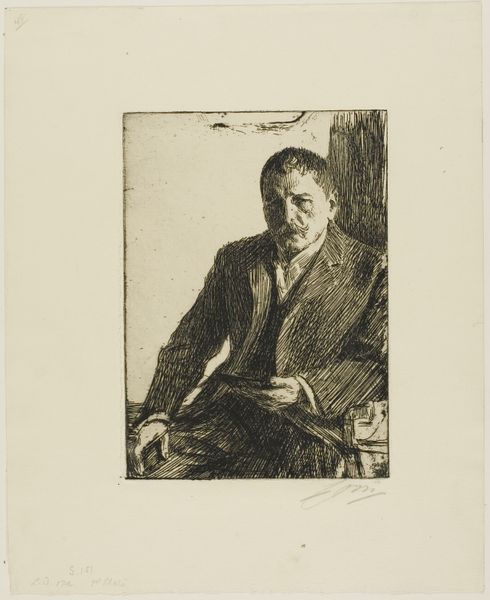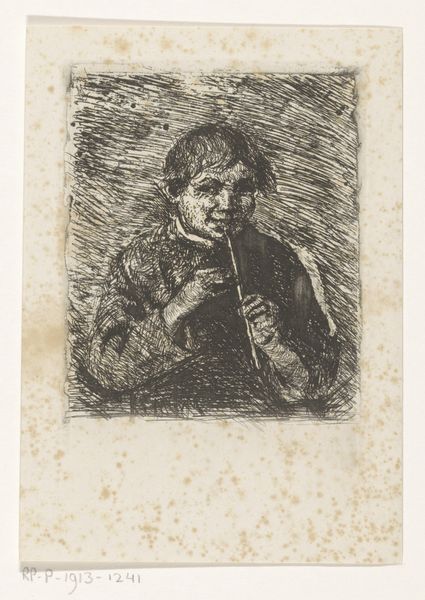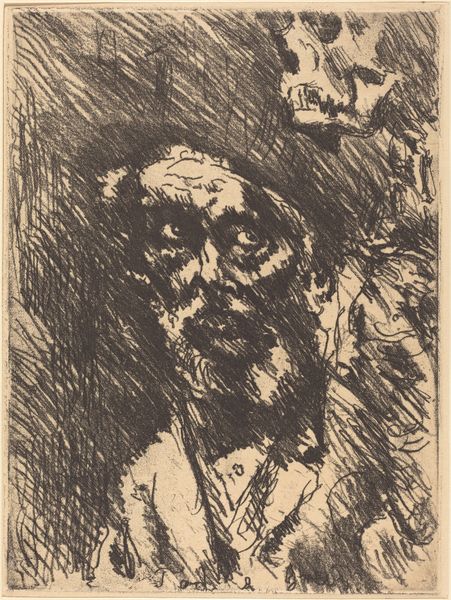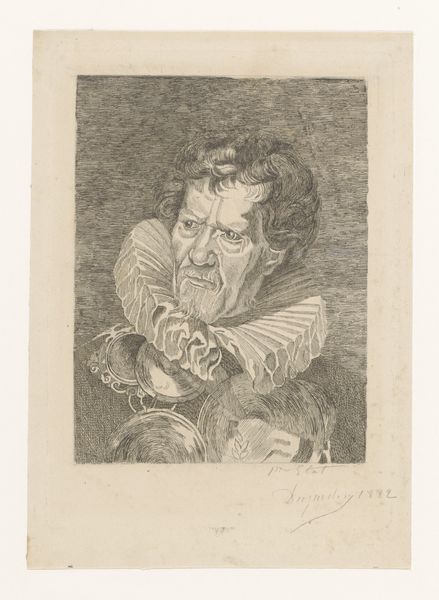
drawing, print, etching
#
portrait
#
drawing
# print
#
etching
#
portrait drawing
#
realism
#
monochrome
Dimensions: height 297 mm, width 206 mm
Copyright: Rijks Museum: Open Domain
Editor: This is "Man met pijp en wandelstok," or "Man with Pipe and Walking Stick," by Gerard Jan Bos, created around 1884. It's an etching. I find the subject's gaze incredibly intense; almost confrontational. What's your interpretation? Curator: It’s certainly a direct image, isn't it? To me, this work exists within the context of a broader 19th-century fascination with representing the working class, specifically through portraiture. Etchings like this made art more accessible to a wider public. How do you think this portrayal engages with or challenges contemporary notions of the working man? Editor: That's a great point. There’s a certain stoicism in his expression. Maybe Bos is trying to offer a counter-narrative to more romanticized depictions? Is that what you mean by accessibility – reaching a broader demographic, but maybe also showing the realities they experience? Curator: Precisely. It's also interesting to consider the political undertones. The pipe and walking stick can be interpreted as symbols of working-class leisure, a claim to personal time and agency in an era of industrial upheaval. Were such items markers of class distinction, or were they presented by other sectors as symbols of self-reliance and aspirations of bourgeois lifestyle? Editor: I hadn't considered the political dimension of those everyday objects. Thinking about it now, his self-assured gaze seems like more of a statement than just a likeness. Curator: The gaze is key. Bos positions him not as an object of pity, but as an individual worthy of respect, inviting the viewer to consider his social standing. And the museum or gallery presenting it adds to this layered history. Editor: It's fascinating how much context informs the reading of an image. It is never truly neutral, isn't it? Curator: Indeed. The political and social landscapes, even when seemingly absent from the canvas, always play a crucial role in the work’s creation and interpretation, shifting with the passing years.
Comments
No comments
Be the first to comment and join the conversation on the ultimate creative platform.

